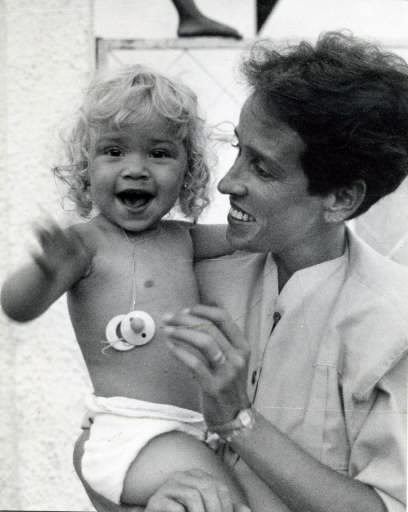5. Victims of Secondary Exposure Ignored
Mar. 25, 2013
Chapter 6: Brazil and Namibia
Part 1: Cesium Contamination in Goiânia
Part 1: Cesium Contamination in Goiânia
When it became known that cesium contamination had occurred on an unprecedented scale in Goiânia, the Brazilian government, the army, and the state government loaded radiation detectors onto helicopters and into vehicles and embarked on a comprehensive check of the city. First of all, they listed eighty-one contaminated areas, then narrowed these down to eight with particularly high radiation levels. All the homes within a one-hundred-and-fifty-yard radius of these eight "hot spots" were checked individually, and any residents found to have cesium-related symptoms were taken to hospital for further examination. The resulting data led to the demolition of all the homes within a thirty-yard radius of Devair Ferreira's house, and the registration of 249 victims who had come into direct contact with the cesium powder.
Teresa Fabiano hugged her two-year-old daughter, Natasha, and told us angrily, "My husband and daughter both show symptoms of cesium contamination, but they will only register my husband. Have you ever heard of anything so ridiculous? "
At the time of the accident, the family was living in the house behind Devair Ferreira's. "Devair's wife loved children, and she was always hugging and kissing Natasha, who was two months old at the time. The poor little thing had diarrhea for eight months after the accident. And look at these blisters under her nose. She gets them all over her body."
The state government insists that Natasha Fabiano's symptoms have nothing to do with exposure to cesium. "It doesn't make any sense to recognize only those who actually touched the cesium—my daughter is suffering from secondary exposure." The doors of the foundation thus closed to Fabiano, she has no way of obtaining medical treatment for Natasha.
Jasil Andrade is another woman pushing for the widening of the foundation's jurisdiction. Doctors there refused to recognize her husband's skin cancer as being related to the cesium contamination, and she believes the government is trying to cover up the true extent of the damage.
The Andrades lived forty yards from Devair Ferreira's house, and they helped to carry people with skin inflammation, hair loss, and other symptoms of radiation sickness to hospital after the accident. Not only was Jasil's husband left off the official register of victims, but the couple had to pay to move house because they lived more than thirty yards from the center of the contamination. They feel the figure of thirty yards to be an arbitrary one with no real significance in terms of the effects of the cesium.
A group of those dissatisfied with the measures taken by the state government got together in December 1987, three months after the accident, and formed the Cesium Victims Association. Jasil became the chairperson. When we spoke to her she had just returned from a trip to Brasilia to petition the federal government for medical assistance for victims not covered under the present system. She showed us a list of the association's members.
"Our members include the 249 victims recognized as such by the state government. In total there are about five hundred names on our list; this shows you just how much the authorities are trying to play down the incident."
Edson Ferrari's response to the association's claims was cool: "The leaders are all overreacting—most of the victims are perfectly satisfied with the assistance we are providing."
At the present time it would seem there is no way that Jasil Andrade, frantically busy with work for the association while taking care of her husband after his operation for skin cancer, or Teresa Fabiano, worried by her daughter's mysterious illness, will ever make it through the door of the foundation's office.








